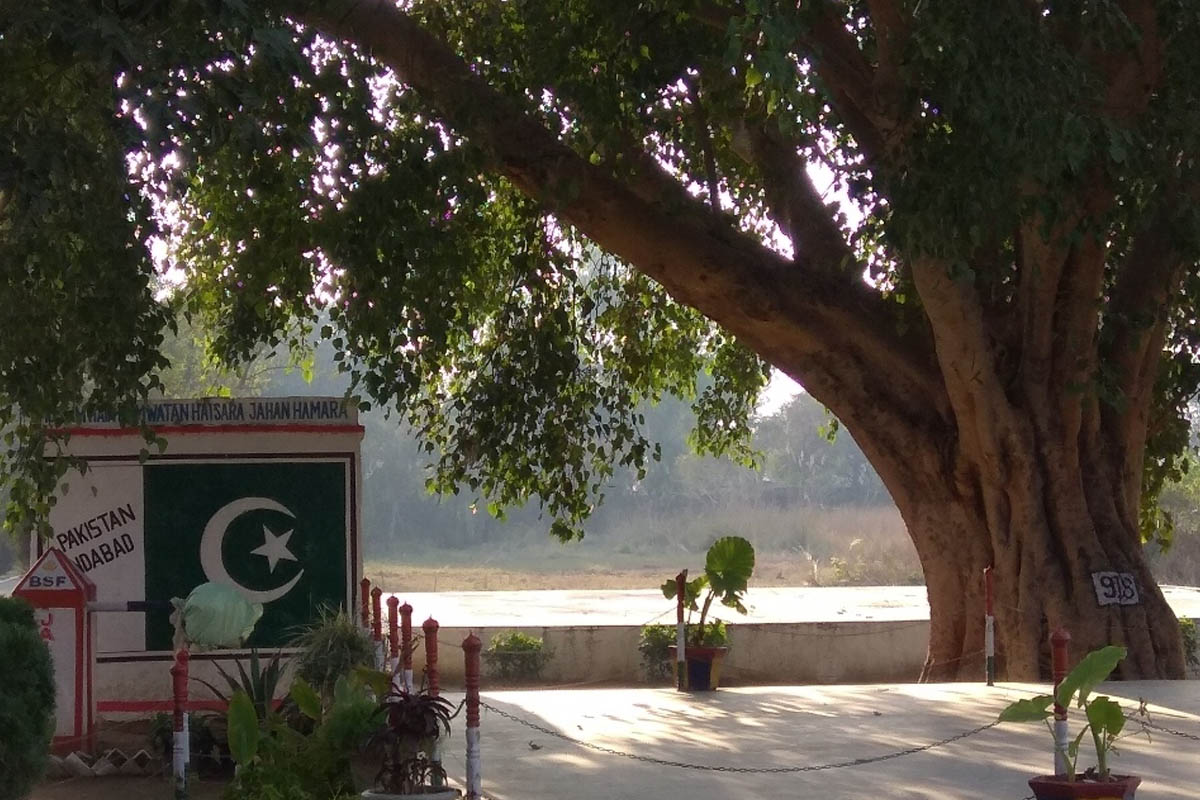The unique banyan tree that demarcates the boundary of India and Pakistan on the International Border (IB) at Suchetgarh in the Jammu district has become the most photographed landmark amidst efforts of the J&K government to make the place a tourist hotspot.
This is perhaps the only point where a tree and not any traditional concrete pillar demarcates boundary of the two countries.
The tree was not the dividing line few years ago as a concrete pyramid shaped pillar number 918 stood there. However, the concrete pillar vanished within the broadening trunk of the tree with passage of time. However, the Indian BSF and Pakistani Rangers guarding their respective borders did not cut the tree and finally painted the 918 marking on the tree. The next pillar 919 is made of concrete but the pillar tree has become an attraction for visitors who come from different parts of the country.
With its increasing circumference, one side of the tree is now within the Indian territory and the other in Pakistan.
During sunrise in the morning the tree gives its shade in Pakistan and in the afternoon on the Indian side of the border.
Both sides do not lay claim over the tree on whose both sides are identical concrete platforms of India and Pakistan on which flag-meetings between the BSF and Rangers are held. The Pakistan Rangers sit on the Indian platform when the meeting is held on the Indian side and the BSF officers cross the border line to meet at the platform on the other side of the tree if the meeting is convened by Pakistan.
Being a live border with frequent exchange of fire between the Indian and Pakistani troops, this part of the IB does not host the beating retreat of BSF and Rangers like that in Wagha, Ferozepur or Fazilka in Punjab.
Prior to the partition in 1947, Suchetgarh was an important railway station between Jammu and Sialkot (now in Pakistan). This was the last place in the territory of the then ruler of J&K and thereafter the Punjab area began with Sialkot as an important trade hub of that time.
The octroi post of the British era is now the observation post of the BSF.
Suchetgarh has also been earmarked as the crossing point for the UN Observers to Pakistan and vice-versa.
Successive governments in J&K have made efforts to promote Suchetgarh as a destination of border tourism. The then Governor NN Vohra personally visited the spot to take stock of steps taken to create infrastructure for tourists.
Another attraction near the border is the Gharana wetland that is these days home to a large number of species of migratory birds. About 6000 birds of different species can presently be seen in the wetland. Most of these birds are migratory and endangered that are covered under various schedules of the Act.
Main attraction of Gharana is the Bar Headed goose which visit the area in large numbers during the winters. As many as 67 species of birds have been spotted in the area by the Wildlife Department. These include, Lesser Whistling Duck, Northern Shoveler, Egyptian Vulture, Long-tailed Shrike, Red-vented Bulbul and Indian Robin.
Lt. Governor’s advisor Baseer Khan during his visit to Suchetgarh last week ordered the authorities to develop facilities for tourists whose footfall has increased.
Jammu’s Director Tourism Raj Kumar Katoch said that 86,000 visitors came ti the border post last year and this year more than 35,000 have so far visited the place.
Inspector General of BSF, NS Jamwal said Suchetgarh has vast potential to be developed as a vital tourist destination.











